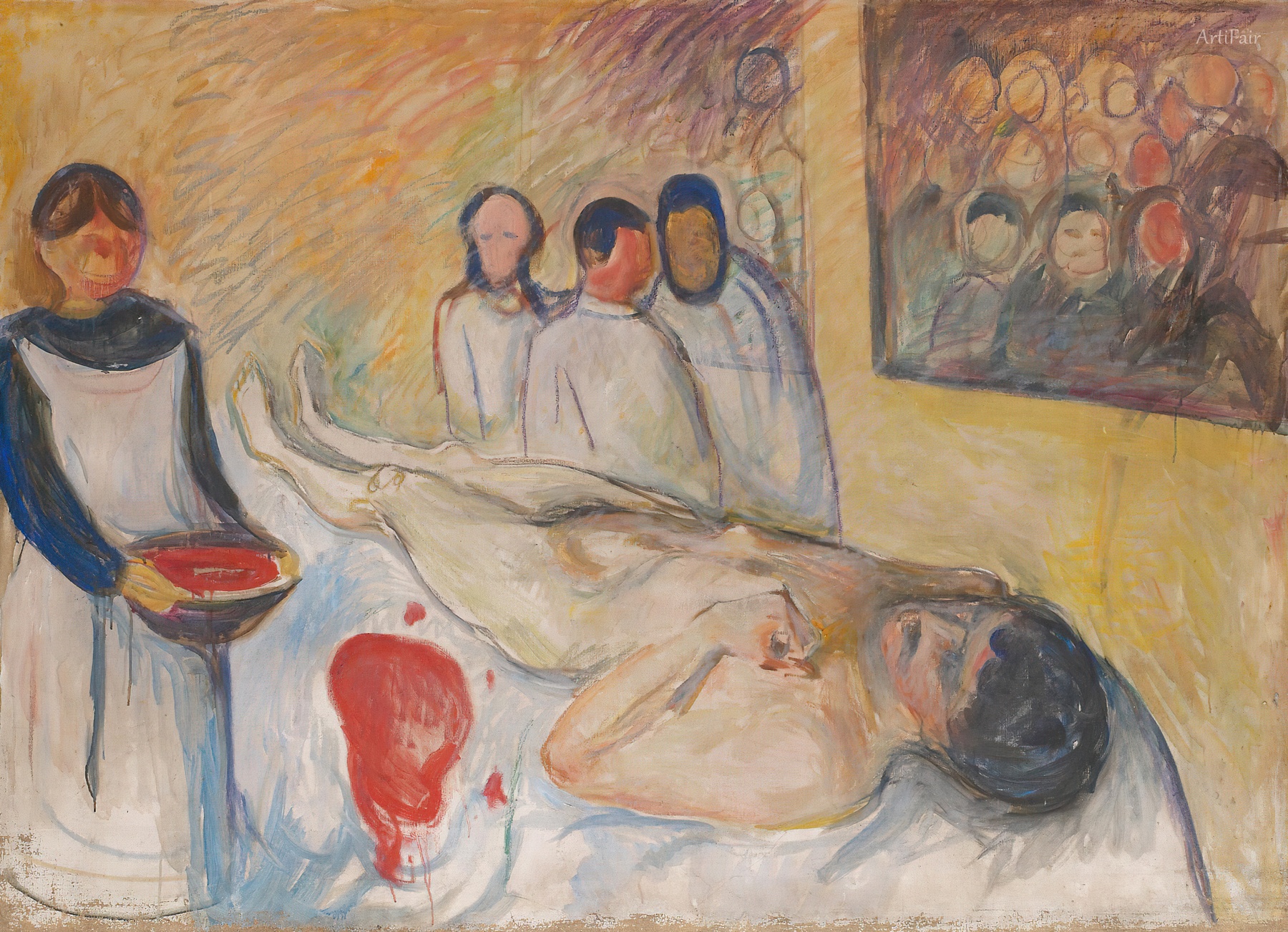
Art Appreciation
The artwork unfolds a scene that starkly encapsulates the interplay between life and death, displaying a patient lying on an operating table, illuminated by an unsettling yet intriguing palette. Edvard Munch’s technique imbues the figures with a fluidity that conveys movement, emotions, and the often-overlooked chaos of surgery. The central figure, a vulnerable man, is portrayed in pale tones; his flesh, almost ghostly, evokes a sense of fragility and imminent departure from life. In contrast, vibrant strokes of red pool around him, serving as a visceral reminder of both the physicality of human existence and the harsh realities of surgical intervention.
Surrounding this poignant moment are figures that seem almost paradoxically calm, dressed in white, their faces marked by an ambiguity of emotion. Are they witnesses to a suffering they cannot bear, or guardians of a delicate process? The background is merely suggested—hints of portraits watching from a distance, emphasizing a sense of voyeurism and judgment. This frenetic blend of colors and forms invites the viewer to experience the emotional weight of the moment, while also conjuring an unsettling atmosphere that speaks to the artist's own existential concerns and fascination with mortality. In the early 1900s, when Munch was grappling with themes of anxiety and despair, this work stands out as a powerful exploration of human vulnerability in the face of inevitable fate.